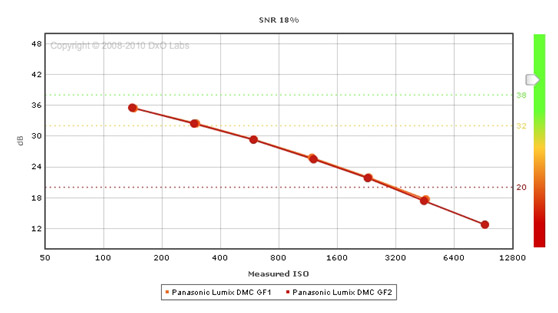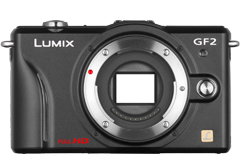Use case scores: GF1 and GF2 are a perfect match.
As soon as one sees the use cases scores, the similarities between the two cameras are more than obvious. Portrait and Landscape scores are exactly the same. The Sports score is a bit higher for the GF1, but only by a mere 7 points (out of 500)—which means that the two sensors have the same limitations when the light is weak, despite the possibility for the GF2 user to select ISO 6400. Neither camera is able to rise above the “30dB noise-9EV dynamic range” limit (synonym of good image quality) above ISO 500.
SNR, dynamic range, color sensitivity: almost identical.
The rest of the metrics confirm this almost perfect similitude. The SNR graph shows that the GF2 is a tiny bit ahead from ISO 100 to 200, but the difference is here again too small to be meaningful.

Conclusion
No need to spend a lot of time comparing the two generations. The sensor for each one shows almost exactly the same performance. The main difference between both cameras is purely functional, with improvements to the GF2’s video function and ergonomics.
Disclaimer: This dxomark review evaluates only the selected camera’s RAW sensor performance metrics (i.e., Color Depth, Dynamic Range, and Low-Light ISO), and should not be construed as a review of the camera’s overall performance, as it does not address such other important criteria as image signal processing, mechanical robustness, ease of use, flexibility, optics, value for money, etc. While RAW sensor performance is critically important, it is not the only factor that should be taken into consideration when choosing a digital camera.





DXOMARK encourages its readers to share comments on the articles. To read or post comments, Disqus cookies are required. Change your Cookies Preferences and read more about our Comment Policy.